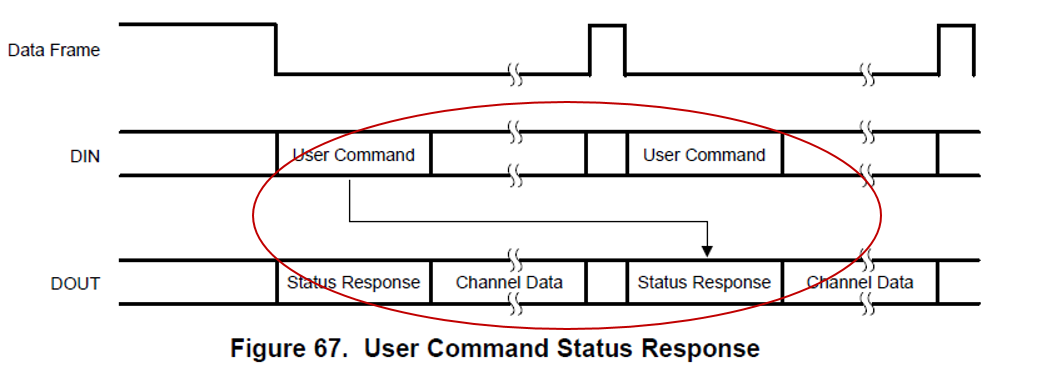Greetings!
I am using ADS131A04 connecting with F28069. I followed the setup guide in the datasheet of ADS131A04. I set up the M0, M1, and M2 as following:
M0 - IOVDD: Asynchronous interrupt mode
M1 - IOVDD: 32 bit SPI word transfer size (while F28069 can only support at most 16 bit SPI transfer size.)
M2 - GND: Hamming code word validation off
I use the fixed frame size with 4 ADCs enabled. I follow the instruction of Figure 51 on Page 36 of ADS131A04 data sheet. However, I have several questions on the communication between two devices:
1. On Figure 51, I shows at the beginning of data transfer, the DIN pin should have "command". What command does this refer to? I don't find the corresponding command for data acquisition, so I send "Null" command.
2. Figure 51 indicates that every data frame should contains 6 * 32 bit data for fixed frame size setup. However, I have to transfer another 16 bit data before receiving the data frame. Below is the pseudocode that I write:
Temp = ADS131A04Receive16();
dFrame->status = ADS131A04Receive32();
for (i = 0; i < 4; i++) {
dFrame->ch[i] = ADS131A04Receive32();
}
crc = ADS131A04Receive32();
I don't know why I have to do this.
3. Figure 67 on Page 49 of ADS131A04 data sheet confuses me. Why would the response corresponds to previous command? Does this conflict with Figure 51?
Thanks,
Dan


